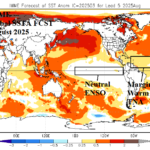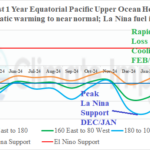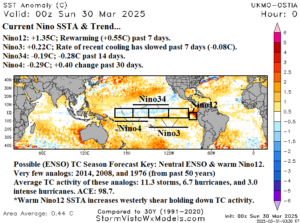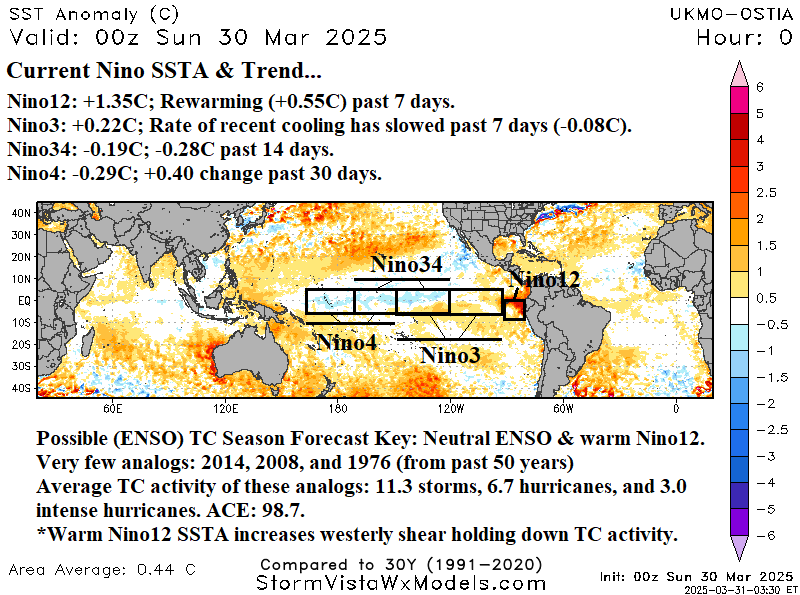
No La Nina and Super-warm North Atlantic Tropics in 2025 Holds Seasonal Activity Back Slightly
03/23/2025, 9:36 am EDT
Warming East Pacific Leads to Wet Climate Bias Western South America
04/02/2025, 8:57 am EDT
Fig. 1: The daily tropical Pacific Ocean SSTA analysis.
Discussion: Of potential influence on the 2025 North Atlantic tropical cyclone season is the ongoing very warm Nino12 SSTA off the northwest coast of South America while the Nino34 SSTA, where oceanic ENSO phase is measured, has recently shifted from La Nina to neutral ENSO although waters in this region have re-cooled slightly during the past 2 weeks. The persistent unusual warming of waters off the northwest coast of South America while the remainder of the equatorial East Pacific observed near normal SSTA began in early February. Most forecast models agree, albeit low confidence, that neutral ENSO prevails through most of the 2025 North Atlantic tropical cyclone season. Coupled with expected regenerating anomalous warmth across the North Atlantic basin, although not as warm as last year, a near to slightly above normal tropical cyclone season forecast is reasonable. The Climate Impact Company 2025 seasonal forecast indicated 17 storms, 7 hurricanes, and 5 intense hurricanes with a 137 ACE index in their March 21 report and similar values are expected from Colorado State University (April 3) and Tropical Storm Risk/U.K. (April 7). But! What if ENSO remains neutral as expected, but the Nino12 SSTA region remains warm? This occurrence is rare occurring on 3 occasions (1976, 2008, and 2014) during the past 50 years. The warm Nino12 SSTA region effect on tropical convection in the eastern tropical North Pacific increases downstream upper westerly shear across the North Atlantic basin to suppress, at least slightly, seasonal activity. During the 3 analog years, tropical cyclone activity averaged 11.3 storms, 6.7 hurricanes, and 3.0 intense hurricanes with a rather low 98.7 ACE index. Bottom line? The North Atlantic basin has been unusually active during 2016-2024 due to a warmer than normal North Atlantic basin and generally favorable ENSO (only 1 strong El Nino year in 2023). This year the favorable climate signals to support another big tropical cyclone year are less robust.

